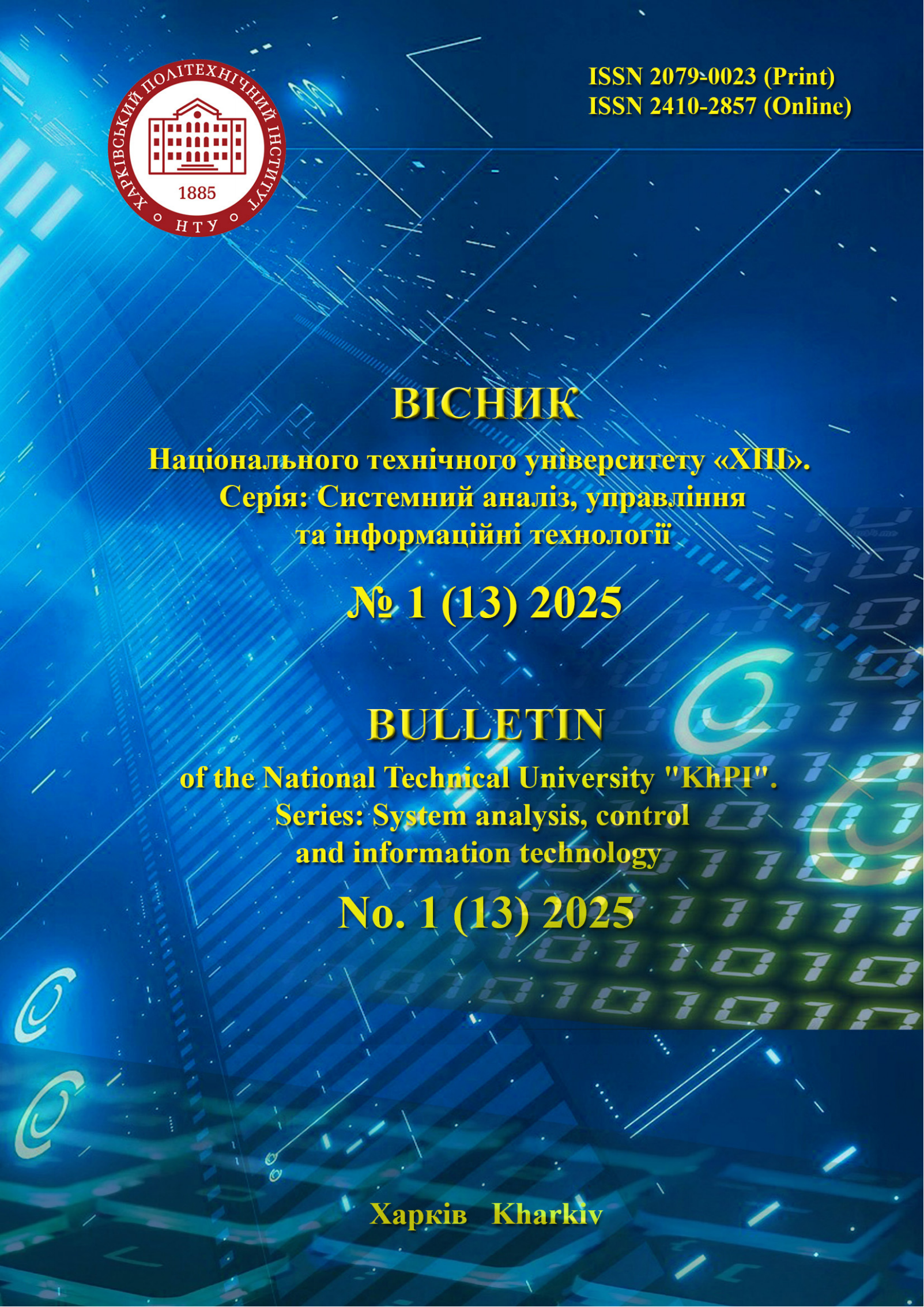LAYERED DEFENSE IN COMMUNICATION SYSTEMS: JOINT USE OF VPN PROTOCOLS AND LINEAR BLOCK CODES
DOI:
https://doi.org/10.20998/2079-0023.2025.01.17Keywords:
cascade transmission model, VPN encryption, Hamming codes, forward error correction, data integrity, communication security, parity bit, noise resilience, network attacks, information reliabilityAbstract
With the rapid increase in the volume of transmitted information and the proliferation of distributed network infrastructures, the requirements for the security and reliability of communication channels are steadily intensifying. Traditional protection methods, such as virtual private networks (VPNs), are primarily aimed at ensuring confidentiality and authenticity through cryptographic algorithms, while typically lacking resilience to transmission-level errors arising from noise, interference, or hardware failures. In contrast, error correction codes—such as Hamming codes—are well-established tools for detecting and correcting random errors in physical channels, but they do not address intentional threats like interception, modification, or traffic analysis. This paper presents a hybrid cascading model for secure and reliable data transmission that integrates cryptographic encapsulation via VPN technologies with structural redundancy provided by error correction coding. A specific focus is placed on the use of Hamming codes extended by an additional parity bit applied at the post-encryption stage, enabling the protection of VPN packet integrity even under noisy channel conditions. The architecture of the proposed model is examined in detail, including its modular components, processing flow, and the various possible configurations of encoding and encryption blocks. Particular attention is given to analysing the threat surfaces present at each phase of transmission—prior to tunneling, during transport, and at the decryption stage—and assessing the system’s robustness through probabilistic reliability metrics and redundancy coefficients. Simulation-based modelling supports the theoretical framework and confirms that the combined use of encryption and redundancy coding significantly enhances overall communication resilience. The results underscore the importance of a comprehensive approach to secure data transmission that jointly addresses logical security threats and physical-level vulnerabilities.
References
Sharov V. O., Nikulina O. M. Study of compatibility of methods and technologies of high-level protocols and error-correcting codes. Bulletin of the National TechnicalUniversity "KhPI". Series: System analysis, management and information technologies. Kharkiv, NTU "KhPI", 2024, no. 2 (12), pp. 92–97.
Shannon C. E. A Mathematical Theory of Communication. Bell System Technical Journal. 1948, vol. 27, no. 3, pp. 379-423.
Stallings W. Cryptography and Network Security: Principles and Practice. Pearson, 2020. 760 p.
Lin Shu, Daniel J Costello. Error Control Coding: Fundamentals and Applications. Pearson, 2004. 720 p.
Tanenbaum A. S., Wetherall D. J. Computer Networks, 5th ed. Pearson, 2011. 808 p.
Hamming R. W. Error Detecting and Error Correcting Codes. Bell System Technical Journal. 1950. 147 p.
MacWilliams F. J., Sloane N. J. A. The Theory of Error-Correcting Codes. North-Holland, 1977. 594 p.
Donenfeld J. WireGuard: Next Generation Kernel Network Tunnel. Available at: https://www.wireguard.com (accessed 05.05.2025).
Dierks T., Rescorla E. The Transport Layer Security (TLS) Protocol. RFC 5246. 2008. 80 p.
IEEE Std 802.11-2020. IEEE Standard for Information Technology—Telecommunications and Information Exchange between Systems—Local and Metropolitan Area Networks. 357 p.
Moon T. K. Error Correction Coding: Mathematical Methods and Algorithms. Wiley, 2005. 464 p.
Anderson R. J. Security Engineering: A Guide to Building Dependable Distributed Systems. Wiley, 2020. 1024 p.
Conti M., Dehghantanha A., Franke K., Watson S. Internet of Things security and forensics: Challenges and opportunities. Future Generation Computer Systems. 2018, vol. 78, part 2, pp. 544–546.
Gutmann P. Engineering Security. Available at: http://www.cs.auckland.ac.nz/~pgut001/pubs/book.pdf (accessed 05.05.2025).
Oppliger R. SSL and TLS: Theory and Practice. Artech House, 2009. 480 p.
Rescorla E. HTTP Over TLS. RFC 2818, 2000. 18 p. Available at: https://www.rfc-editor.org/rfc/rfc2818 (accessed 05.05.2025).
Downloads
Published
How to Cite
Issue
Section
License

This work is licensed under a Creative Commons Attribution 4.0 International License.
Authors who publish with this journal agree to the following terms:
- Authors retain copyright and grant the journal right of first publication with the work simultaneously licensed under a Creative Commons Attribution License that allows others to share the work with an acknowledgement of the work's authorship and initial publication in this journal.
- Authors are able to enter into separate, additional contractual arrangements for the non-exclusive distribution of the journal's published version of the work (e.g., post it to an institutional repository or publish it in a book), with an acknowledgement of its initial publication in this journal.
- Authors are permitted and encouraged to post their work online (e.g., in institutional repositories or on their website) prior to and during the submission process, as it can lead to productive exchanges, as well as earlier and greater citation of published work (See The Effect of Open Access).


